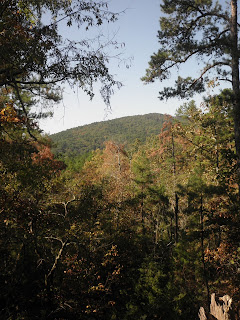Recently, I found these old ottomans that were covered in bad 90's polyester cloth that itself was covered in, well... traces of the cat that lived in the house for some years. Apparently bad upholstery made the cat sick to its stomach as well.
 |
| Sad, filthy ottomans. |
The legs and structures underneath were sturdy and in good shape, so I set to task disassembling and removing the unmentionable fabric (if you can call it that in its current state). What you'll need for this very basic upholstery job:
Needle-nose Pliers
Flathead screw driver
Staple gun with staples
2.5 yds upholstery fabric of your choice
5yds batting (not loose, rolled, similar to interfacing)
Measuring tape
Sharp, fabric scissors
Step 1:
Removing the fabric and staples. This is easier said than done. My most used technique was inserting the flathead screwdriver under the staple, prying it loose as much as I could, and using the pliers to yank the rest out. You will need to remove all (yes, all) of the staples attaching the upholstery, as you don't want them to interfere with your new staple job.
 |
| Cleaned up and ready to go |
Lucky for us, the legs were in decent shape but needed a bit of polishing. At this point, you may decide to paint the legs, or re-stain them. If so, you will need a mid-corse grade sandpaper, a fine grade, and if you are using stain, a good stain and possible denatured alcohol. If you are painting, I would prep with a bit of primer, let dry, then gently coat with paint. You also may choose to spray-paint, just make sure you don't use one with too much gloss or spray too close.
Step 3:
Measuring and cutting your fabric. You are going to need two basic measurements to cut the correct size of upholstery fabric-- the depth and width of the piece, including the sides you need to cover. Measure the front, top, and back of the piece. Add AT LEAST three inches to the fabric. Same goes for the sides. Measure both sides and width, and don't forget to add your three inches for room. Now you have the measurements for your fabric box!
PRO-TIP: center your measurements around a central point in your design that you'd like to feature on the top/middle of your furniture. Nothing is worse than an askew fabric job!
Step 4:
Attaching your batting. I made two attachments of batting to my ottoman, adding a bit on the sides (though it is unnecessary, I just wanted a plusher look). I cut squares of rolled batting in the shape of the very top of my ottoman, leaving about 1/2in of hangover on either side. I made about 6 such squares, and secured them with staples using the 1/2in overhang on the sides of the ottoman. For the plush look, I cut a square exactly the size of the upholstery fabric.
Step 5:
Attaching the upholstery fabric. Find a large, flat space free of snags or splinters that may pull your upholstery fabric. My dining table topped with a quilting mat worked well. Center the upholstery on your work surface, right-side down. If you are using the extra piece of batting, center this on the wrong side of the upholstery fabric. On top of this, center your now-fluffed piece of furniture that you would like to cover. CENTER, CENTER, CENTER. Should I say it again? Working with the long sides first, fold 1/2 inch of the fabric in, and pull taught up the side of the piece. Staple. Keep working from the center stapled point, making sure to keep the fabric (and batting) taut and making sure not to move the center of the fabric. Stop attaching the fabric 1in before reaching the legs. You will need this room to correctly adjust your side folds. Repeat on backside.
Finishing the ends-- You're going to treat this area like you're wrapping a present. Fold in the remaining fabric around the leg attachments, making sure to keep your exposed cut ends taut and well-folded. At this point, you want to eyeball the last fold to make sure no wrinkling occurs. Once you've established the best "lay" of the fabric, staple to secure the remainders of side fabric before folding up and finishing the final flap, making sure the staples won't be exposed. Be sure to turn in 1/2 in of the fabric to create the no-fray clean line. The last flap shouldn't come to a point, but should span the entire distance of the end, covering your in-folds as much as possible. Staple in the center, and work out as much as possible.
 |
| A view of the end-folds. |
That's all she wrote! It's fairly easy once you get the hang of it. The upholstery portion itself took only 20 minutes start to finish, whereas the removal of the staples took a few hours. My 2nd ottoman is better than my first, but that's to be expected.
We're using one as seating in the living room, and one as an extra seat in our dining room for company... that is, if the cat ever lets us have it back!














